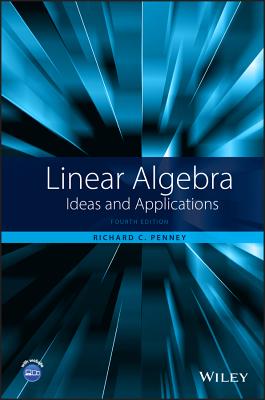Excel Programming: Your visual blueprint for creating interactive spreadsheets, 2/e
Jinjer Simon
- 出版商: Hungry Minds
- 出版日期: 2005-09-02
- 售價: $1,140
- 貴賓價: 9.5 折 $1,083
- 語言: 英文
- 頁數: 352
- 裝訂: Paperback
- ISBN: 0764597817
- ISBN-13: 9780764597817
-
相關分類:
Excel
已過版
買這商品的人也買了...
-
 C++ Primer, 3/e 中文版
C++ Primer, 3/e 中文版$980$774 -
 $780CMMI: Guidelines for Process Integration and Product Improvement (Harcover)
$780CMMI: Guidelines for Process Integration and Product Improvement (Harcover) -
 建構嵌入式 Linux 系統
建構嵌入式 Linux 系統$780$616 -
 Windows CE 嵌入式系統理論與實務
Windows CE 嵌入式系統理論與實務$680$537 -
 ASP.NET 徹底研究進階技巧─高階技巧與控制項實作
ASP.NET 徹底研究進階技巧─高階技巧與控制項實作$650$507 -
 CCNA Cisco Certified Network Associate Study Guide, 5/e (640-801)
CCNA Cisco Certified Network Associate Study Guide, 5/e (640-801)$1,700$1,666 -
 輕快的好 Java (Better, Faster, Lighter Java)
輕快的好 Java (Better, Faster, Lighter Java)$760$600 -
 Head First Servlets & JSP:SCWCD 專業認證指南 (Head First Servlets & JSP)
Head First Servlets & JSP:SCWCD 專業認證指南 (Head First Servlets & JSP)$880$748 -
 CCNA 認證教戰手冊 (CCNA: Cisco Certified Network Associate Study Guide, 5/e)(Exam 640-801)
CCNA 認證教戰手冊 (CCNA: Cisco Certified Network Associate Study Guide, 5/e)(Exam 640-801)$820$648 -
 計算機組織與設計 (Computer Organization and Design: The Hardware/Software Interface, 3/e)
計算機組織與設計 (Computer Organization and Design: The Hardware/Software Interface, 3/e)$680$646 -
 最新詳解 Javascript & HTML & CSS 語法辭典(增訂新版)
最新詳解 Javascript & HTML & CSS 語法辭典(增訂新版)$490$382 -
 VoIP 網路電話技術
VoIP 網路電話技術$350$277 -
 Linux 核心開發指南 (Linux Kernel Development, 2/e)
Linux 核心開發指南 (Linux Kernel Development, 2/e)$550$495 -
 PowerPoint 2003 魔法教室
PowerPoint 2003 魔法教室$420$332 -
 深入淺出 Java 程式設計, 2/e (Head First Java, 2/e)
深入淺出 Java 程式設計, 2/e (Head First Java, 2/e)$880$695 -
 SIP 會談啟始協議操典
SIP 會談啟始協議操典$680$537 -
 Linux Kernel 完全剖析
Linux Kernel 完全剖析$750$585 -
 Excel 2003 特訓教材
Excel 2003 特訓教材$550$435 -
 專業 Java 整合開發工具 Eclipse 3 (Professional Eclipse 3 for Java Developers)
專業 Java 整合開發工具 Eclipse 3 (Professional Eclipse 3 for Java Developers)$560$442 -
 Linux Mail Server 技術實務─架設、稽核、防毒、防垃圾信
Linux Mail Server 技術實務─架設、稽核、防毒、防垃圾信$580$458 -
 Word 2003 完全教本
Word 2003 完全教本$450$356 -
 鳥哥的 Linux 私房菜基礎學習篇, 2/e
鳥哥的 Linux 私房菜基礎學習篇, 2/e$780$663 -
 Microsoft SQL Server 2005 設計實務
Microsoft SQL Server 2005 設計實務$680$537 -
 Ajax 網頁程式設計─Google 成功背後的技術
Ajax 網頁程式設計─Google 成功背後的技術$580$458 -
 ASP.NET 2.0 深度剖析範例集
ASP.NET 2.0 深度剖析範例集$650$507
商品描述
Description:
Excel(r) Programming 2nd Edition
Welcome to the only guidebook series that takes a visual approach to professional-level computer topics. Open the book and you'll discover step-by-step screen shots that demonstrate over 120 key Excel programming techniques, including:
* Creating and launching keyboard shortcuts
* Setting macro security
* Assigning a digital signature
* Developing a function with VBA
* Displaying a built-in dialog box
* Converting a list into an array
* Using the msgbox function
* Processing a runtime error
* Saving a workbook in a specified format
* Finding the intersection of two ranges
Table of Contents:
HOW TO USE THIS BOOK.GETTING STARED WITH EXCEL MACROS.
Introduction to Macros.
Record a Macro.
Run a Macro.
Create and Launch a Keyboard Shortcut.
Delete a Macro from a Workbook.
Delete from the Personal Macro Workbook.
Assign a Macro to a Toolbar Button.
Assign a Macro to a Menu.
Set Macro Security.
USING THE VISUAL BASIC EDITOR.
An Introduction to the Visual Basic Editor.
Activate the Visual Basic Editor.
Arrange the Visual Basic Editor Windows.
Set Properties for a Project.
Set Display Options for the Code Window.
Add a New Module.
Remove a Module.
Rename a Macro.4
Create a Startup Macro.
Hide a Macro.
Assign a Digital Signature to a Macro.
Update a Recorded Macro.
VBA PROGRAMMING BASICS.
An Introduction to VBA.
Create a Subroutine.
Create a Function.
Declare a Variable.
Perform Mathematical Calculations.
Create a Constant.
Comment Your Code.
Join Two Strings.
WORKING WITH THE EXCEL OBJECT MODEL.
An Introduction to the Excel Object Model.
Using the Object Browser.
Create an Object Variable.
Change the Properties of an Object.
Compare Object Variables.
Using an Object Method.
Display a Built-in Dialog Box.
USING VARIABLES AND ARRAYS.
Assign Values to Variables.
Using Global Variables.
Declare an Array.
Declare a Multidimensional Array.
Convert a List into an Array.
Redimension an Array.
Create a User-Defined Data Type.
ADDING CONTROL STATEMENTS.
Execute a Task While a Condition is True.2
Perform Multiple Tasks Until a Condition is Met.
Execute Tasks a Specific Number of Times.
Using the For Each Next Loop.
Conditionally Execute a Group of Statements.
Execute a Statement Based upon the Value.
Jump to a Specific Location in a Macro.
Conditionally Call a Subroutine.
USING BUILT-IN FUNCTIONS AND STATEMENTS.
Using Excel Worksheet Functions.
Using the MsgBox Function.
Using the InputBox Function.
Retrieve Current Date and Time.
Determine the Amount of Time between Dates.
Format a Date Expression.
Format a Numeric Expression.
Remove Extra Spacing from a String.
Return a Portion of a String.
Compare Two Strings.
DEBUGGING MACROS.
Debugging Basics.
Debug a Procedure with Inserted Break Points.
Using Watch Expressions to Debug a Procedure.
Step through a Procedure.
Resume Execution if an Error is Encountered.
Process a Runtime Error.
WORKING WITH OTHER WORKBOOKS AND FILES.
Open a Workbook.
Open a Text File as a Workbook.
Open a File Requested by the User.
Save a Workbook.6
Save Workbook in Format Specified by User.
Determine if a Workbook is Open.0
Close a Workbook.
Create a New Workbook.
Delete a File.
Find a File.
WORKING WITH WORKSHEETS.
Add a Sheet.
Delete a Sheet.
Move a Sheet.
Copy and Paste a Sheet.
Hide a Sheet.
Change the Name of a Sheet.
Save a Sheet to Another File.
Protect a Worksheet.
Protect a Chart.
Print a Sheet.
Sort Worksheets by Name.
DEFINING RANGES.
Using the Range Property.
Using the Cells Property.
Combine Multiple Ranges.
Using the Offset Property.
Delete a Range of Cells.
Hide a Range of Cells.
Specify the Name of a Range.
Resize a Range.
Insert a Range.
Set the Width of Columns in a Range.
Set the Height of Rows in a Range.
Convert a Column of Text into Multiple Columns.
Find the Intersection of Two Ranges.
WORKING WITH CELLS.
Cut and Paste Ranges of Cells.
Copy and Paste Ranges of Cells.0
Custom Paste Values in Cells.
Add Comments to a Cell.
Automatically Fill a Range of Cells.
Copy a Range to Multiple Sheets.
Place Borders around a Range of Cells.
Find Specific Cell Values.
Find and Replace Values in Cells.
CUSTOMIZING DIALOG BOXES, MENUS, AND TOOLBARS.
UserForm Basics.
Working with CommandBars.
Create a Custom Dialog Box.
Call a Custom Dialog Box from a Procedure.
Capture Input from a Custom Dialog Box.
Validate Input from a Dialog Box.
Create Custom UserForm Controls.
Create a UserForm Template.
Create a Custom Toolbar.
Add Controls to a Toolbar.
Create a Custom Menu.
Add Items to a Menu.
Create a Shortcut Menu.
Delete Custom Toolbars and Shortcut Menus.
WORKING WITH CHARTS.
Chart Basics.
Create a Chart Sheet.
Embed a Chart within a Worksheet.
Apply Chart Wizard Settings to a Chart.
Add a New Data Series to a Chart.
Format Chart Text.
Create Charts with Multiple Chart Types.
Determine Variations in a Series of Data.
Add a Data Table to the Chart.
Customize the Chart Axis.
AUTOMATING PROCEDURES WITH EXCEL EVENTS.
Understanding Excel Events.
Run a Procedure as a Workbook Opens.
Run a Procedure before Closing a Workbook.
Run a Procedure before Saving a Workbook.
Run a Procedure When Excel Creates a Workbook.
Monitor a Range of Cells for Changes.
Execute a Procedure at a Specific Time.
Execute a Procedure When You Press Keys.
Run a Procedure When Right-Clicking a Chart.
APPENDIX A: VBA QUICK REFERENCE.
VBA and Excel Object Model Quick Reference.
APPENDIX B: ABOUT THE CD-ROM.
What Is on the CD-ROM.
Using the E-Version of This Book.
Wiley Publishing, Inc. End-User License Agreement.






























